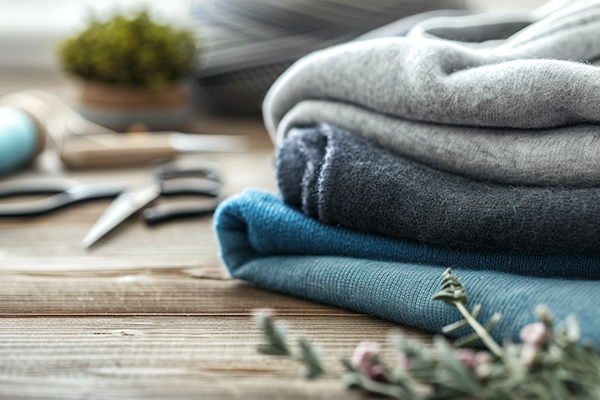The hoodie, an iconic wardrobe staple, transcends fashion trends and cultural boundaries. Whether worn for comfort, style, or utility, this versatile garment has a fascinating history and remains a global favorite. But who creates hoodies, where do they come from, and what exactly are they called in the world of fashion?
Hoodies are designed and manufactured by brands ranging from mass-market retailers to luxury fashion houses. While they originated as practical workwear1, they’ve evolved into a cultural symbol embraced by diverse groups.
In this article, we’ll explore where hoodies are made, their classification as an upper garment, and the many names they’re known by.
Where are hoodies made from?
The production of hoodies involves a global supply chain, with materials sourced from various countries and manufacturing spread across different regions.
Hoodies are primarily made from cotton, polyester, or blended fabrics, and their production often takes place in countries with strong textile industries, such as China, Bangladesh, and Vietnam.

Key Materials Used in Hoodies
-
Cotton
- Offers softness, breathability, and comfort.
- Often used in premium hoodies for casual and everyday wear.
-
Polyester
- Provides durability, wrinkle resistance, and moisture-wicking properties.
- Commonly found in athletic hoodies or performance wear.
-
Blended Fabrics
- Combines the best qualities of cotton and polyester for balance in comfort and durability.
-
- Fleece is a brushed fabric used for warm, cozy hoodies.
- French terry is a lightweight material for breathable, mid-season options.
Sustainability in Hoodie Production3
- Many brands now source organic cotton or recycled polyester to minimize their environmental footprint.
- Ethical manufacturing practices, such as fair wages and safe working conditions, are increasingly emphasized in the hoodie industry.
| Material | Advantages | Common Use |
|---|---|---|
| Cotton | Soft, breathable, comfortable | Casual hoodies |
| Polyester | Durable, moisture-wicking | Athletic hoodies |
| Fleece | Warm, cozy | Winter hoodies |
| French Terry | Lightweight, breathable | Spring and summer hoodies |
From sourcing materials to final production, hoodies reflect a global effort that meets the demand for comfort and functionality.
Is a hoodie an upper garment?
The hoodie, with its unique features and versatility, often blurs the lines between casual wear and functional outerwear.
A hoodie is classified as an upper garment, typically worn over a T-shirt or other base layer. It serves both as casual wear and as light outerwear for cooler weather.

Characteristics of a Hoodie
-
Design Elements
- A hooded sweatshirt with a drawstring closure.
- Often features a kangaroo pocket or zippered front.
-
Layering Versatility
- Can be worn as a standalone piece or layered with jackets and coats for additional warmth.
-
Occasions for Use
- Casual outings, athletic activities, or lounging at home.
- Stylish enough for streetwear, yet practical for outdoor adventures.
Hoodie vs. Other Upper Garments
| Upper Garment | Features | Best Use |
|---|---|---|
| Hoodie | Hood, kangaroo pocket, relaxed fit | Casual and athletic wear |
| Sweatshirt | No hood, similar fabric | Casual and layering |
| Jacket | Often structured, with added insulation | Cold-weather outerwear |
Hoodies bridge the gap between activewear and streetwear, making them a versatile and functional upper garment.
What is a hoodie actually called?
While "hoodie" is the most common term, this garment goes by different names depending on context, region, and culture.
A hoodie is also referred to as a hooded sweatshirt, pullover, or zip-up, and its name may vary based on style or purpose.
Common Names for Hoodies
-
Hooded Sweatshirt
- A formal term often used in retail or manufacturing contexts.
-
Pullover
- Refers to hoodies without a zipper that are pulled over the head.
-
Zip-Up Hoodie
- A hoodie with a front zipper, offering ease of wear and ventilation.
-
Kangaroo Hoodie
- Named after the kangaroo pocket typically found on pullover hoodies.
Regional Variations
- Australia: Known as a "jumper" or "hoodie jumper."
- UK: Sometimes called a "hoody" or "top."
- US: "Hoodie" is the most popular term, though "sweatshirt" is also used interchangeably.

Cultural Slang
- In some streetwear circles, hoodies are referred to as "hoods" or "hooded tops," reflecting their role in urban fashion.
| Name | Features |
|---|---|
| Hooded Sweatshirt | Formal term for any hooded garment |
| Pullover | Hoodie without a zipper |
| Zip-Up | Hoodie with a front zipper |
| Kangaroo Hoodie | Features a large front pocket |
No matter what it’s called, the hoodie remains a universal favorite for its practicality and style.
The Global Appeal of the Hoodie
Hoodies have gained popularity across all demographics and cultures, thanks to their versatility and ability to adapt to various trends:
-
- Brands like Supreme, Off-White, and Nike have elevated hoodies into fashion statements.
-
- Hoodies are a staple in the athleisure movement, combining style with everyday comfort.
-
Personalization and Branding
- Custom embroidery, screen printing, and logo placements make hoodies popular for personal and promotional use.
-
All-Season Use
- Lightweight hoodies work well for spring and fall, while fleece-lined versions are ideal for winter.
Conclusion
Hoodies are a globally beloved upper garment, produced from materials like cotton, polyester, and fleece in manufacturing hubs like China and Bangladesh. Known for their versatility, they are suitable for casual, athletic, and streetwear settings. While they may be called hooded sweatshirts, pullovers, or zip-ups, the hoodie remains a fashion icon that continues to adapt to changing trends and cultural influences. Whether for comfort, function, or style, hoodies have cemented their place as a must-have item in wardrobes worldwide.













